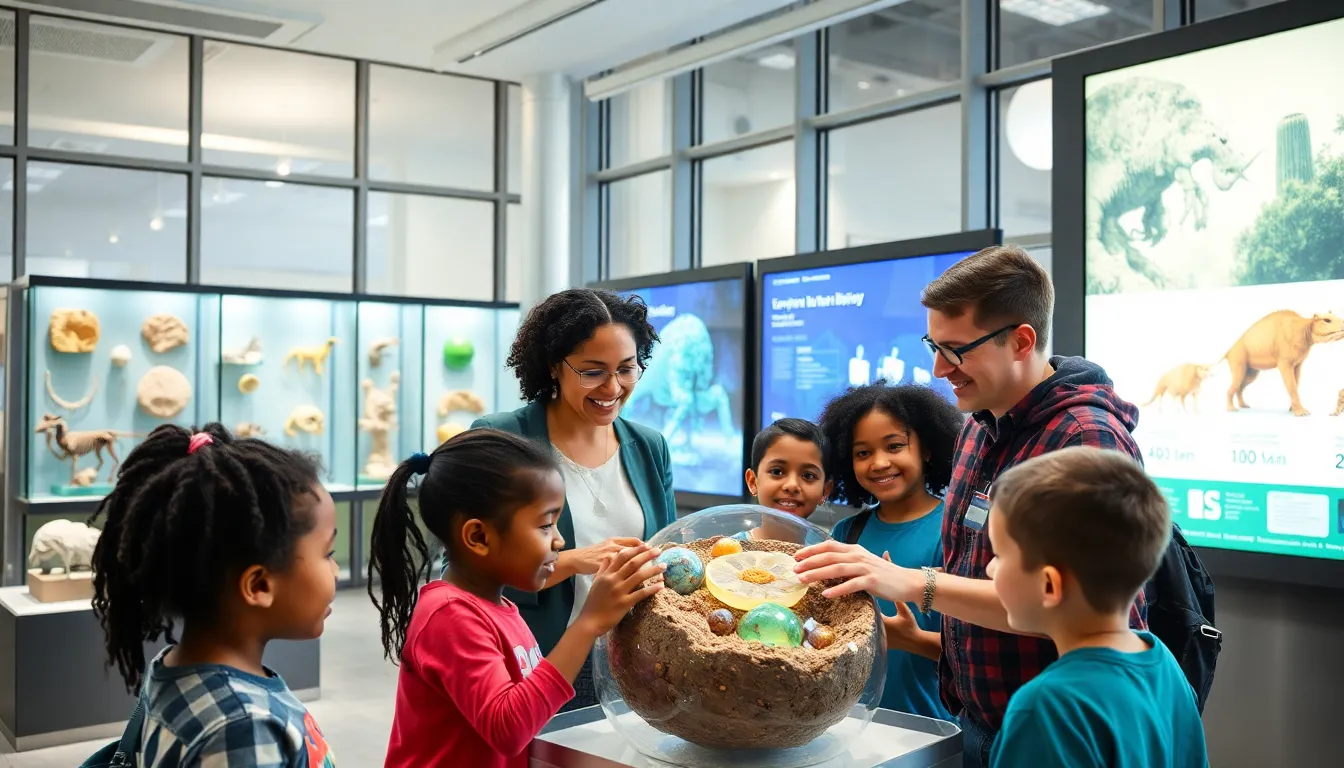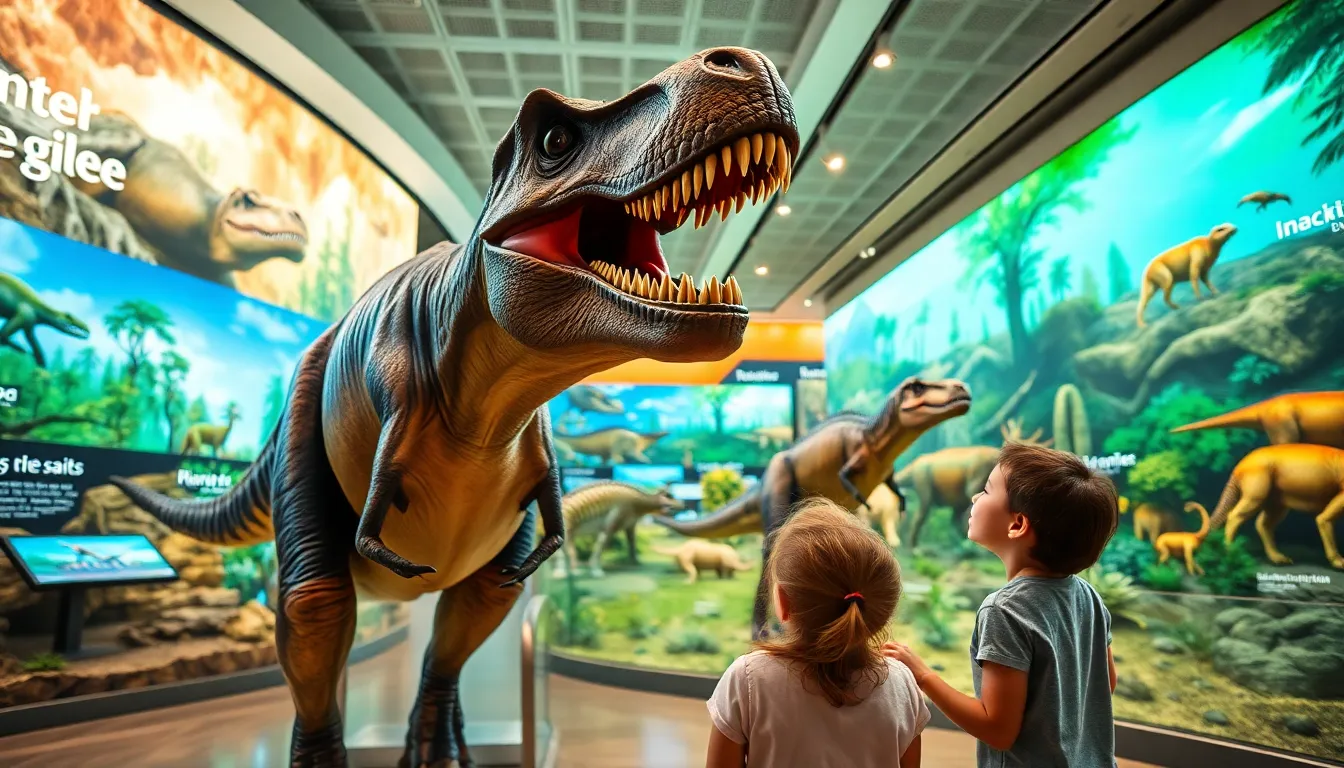Have you ever wondered how museums can make the complexities of life science as engaging as binge-watching your favorite series? Life science museums do just that. They’re not just about dusty exhibits and old bones. These vibrant spaces blend education and entertainment, creating a fascinating journey through evolution and biodiversity. Buckle up as we explore the wonders these museums bring to the table, and maybe inspire you to visit one soon.
Table of Contents
ToggleThe Role of Life Science Museums in Education

Life science museums serve as pivotal centers for education, turning complicated topics into accessible concepts. They provide opportunities for hands-on learning, crucial when it comes to understanding evolutionary biology and natural history.
By engaging students of all ages, these institutions transform passive observation into interactive exploration. School groups often find themselves captivated by the sights, sounds, and even smells of their surroundings, fostering a connection with the material that standard classroom settings simply can’t match. Also, workshops, guided tours, and special exhibits enrich this learning experience. Studies show that experiential learning often results in improved retention rates compared to traditional methods.
For instance, kids might find themselves examining the intricate workings of a cell or discovering how species adapt over time by interacting with models and displays. The ability to physically touch, observe, and question creates a memorable educational experience that profoundly impacts comprehension and curiosity about the natural world.
Besides, these museums foster critical thinking and scientific literacy. They often highlight the importance of scientific research and ethics, encouraging visitors to think about not just how life evolves, but why that knowledge matters in today’s world.
Exhibits That Bring Evolution to Life
What good is a museum if its exhibits don’t dazzle and educate? Life science museums design their exhibits to do just that. From interactive displays to lifelike dioramas, these creations bring evolution to life in ways that text and lectures cannot.
One popular exhibit might feature a timeline of life on Earth, showcasing major evolutionary milestones. You can wander through an immersive reconstruction of prehistoric environments, complete with life-sized models of ancient creatures. Imagine standing next to a towering T. rex, it’s easier to grasp the concept of evolution when you can visualize its staggering scale.
Another fascinating area is genetics. Visitors can explore how traits are passed down and see real-life examples of genetic variation in animal species. Interactive stations might allow guests to experiment with DNA, giving them a firsthand experience of how life changes across generations. This hands-on approach not only makes the topic more appealing but also instills a sense of wonder at the complex processes that allow life to thrive.
Themed weekends or workshops often enhance the experience further, allowing for deeper dives into specific topics. Whether it’s a day dedicated to marine biology or bird evolution, museums remain at the forefront of making science not just understandable but enjoyable.
The Intersection of Technology and Life Science Museums
Modern life science museums are increasingly reliant on technology to enhance visitor engagement and learning. Gone are the days of static displays: today’s exhibits often incorporate augmented reality (AR) and virtual reality (VR) to provide dynamic learning experiences.
Imagine donning a VR headset and being transported back to the Cretaceous period. Visitors can witness dinosaurs in their natural habitat, making the learning experience immersive and unforgettable. This tech-forward approach caters to a younger audience, who often expect high levels of interactivity in their environments.
Also, mobile apps tied to museum exhibits offer additional layers of information. Visitors can scan QR codes to learn more about exhibits at their own pace, enabling a customized experience. Some museums even harness artificial intelligence to provide personalized recommendations based on visitor interests. This marks a significant leap forward in how museums can engage audiences, making science accessible and adaptable to diverse learning styles.
Incorporating technology doesn’t just enrich the visitor experience: it also aids in the preservation of biological specimens. Advanced imaging and preservation techniques ensure that delicate artifacts remain safe while still being displayed, promoting both education and conservation.
Redwebzine: Bridging the Gap Between Science and Art
Redwebzine plays a crucial role in bridging the often-perceived gap between science and art within museums. By showcasing artistic interpretations of scientific concepts, this platform fosters a unique dialogue between disciplines.
Visitors are treated to immersive exhibitions that blend creativity with science, making complex ideas more relatable. For example, a stunning visual representation of genetic sequences or vivid artworks inspired by evolutionary processes can spark conversations about both aesthetics and biological significance.
Also, this integration encourages budding artists and scientists alike. It allows them to express their understanding of life sciences creatively while challenging both communities to think outside their traditional boundaries. Such collaborations elevate the conversation around science and promote a broader understanding of its importance in society.
In this way, Redwebzine emphasizes that science isn’t just facts and figures: it’s a vibrant tapestry woven from the threads of discovery and imagination. The inclusion of artistic projects and displays enhances the overall museum experience, inviting visitors to explore and reflect on the connections between these diverse fields.
Future Trends in Life Science Museum Experiences
As life science museums evolve, several trends are emerging that promise to transform the visitor experience even further. One notable trend is the growing emphasis on sustainability. Museums are beginning to showcase not only the science of life but also the science of keeping it sustainable.
Exhibits that highlight environmental issues, like climate change and conservation efforts, are becoming commonplace. Educational programs focus on empowering visitors to make a positive impact on their environment, creating a community of informed citizens committed to sustainability.
Another trend is the incorporation of multicultural perspectives in understanding evolution and life sciences. By presenting a variety of cultural narratives and indigenous knowledge, museums provide a more comprehensive view of how different societies perceive the natural world. This not only enriches the museum experience but also promotes inclusivity and diverse voices.
Finally, the push towards more interactive and immersive experiences will continue to grow. Future exhibits may incorporate even more advanced technologies like holograms and interactive simulations, giving visitors the ability to explore life sciences more personally. The focus will be on making science engaging for all ages while fostering connections between visitors and the natural world.





